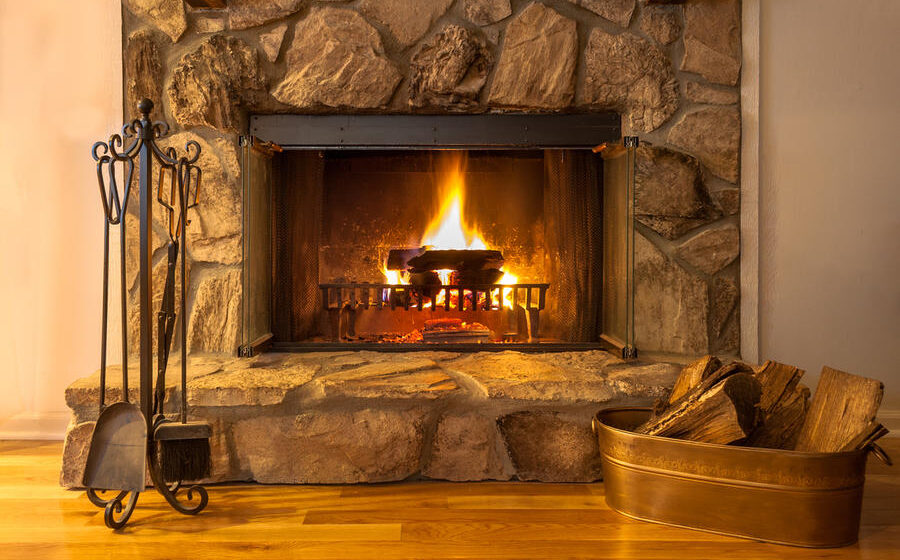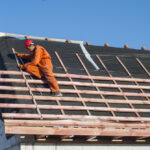During the operation of a fireplace, like any other heating device, certain difficulties often arise. However, do not rush to call a specialist: some problems can be fixed on your own.
Cleaning the door glass
Sooner or later, carbon deposits will form on the inside of the fireplace glass. There are several ways to remove it.
Method one. We wet an ordinary household sponge with water and then soaked it in the ash from the combustion chamber. Carefully, trying not to press too hard, wipe the glass of the door. We repeat the procedure several times until the carbon deposits begin to wash off. Then wipe dry with toilet paper or a paper napkin.
Method two. Instead of ash, we will use a product to remove scale from gas stoves. Apply it to the glass in the form of generous foam, remove the soot, and wipe with a clean cloth.
Method three. Involves the use of a chemical grease remover for glass-ceramic surfaces. Spray it on the most contaminated areas and, after 5 minutes, wash off the carbon deposits along with the foam.

Changing the grate
Even a child can cope with this problem. Carefully remove the old burnt grate from the cooled fireplace, having first cleared it of ash. We put a new one in its place – the same size and the same configuration.
If it rests on brick ledges, check their condition. They must be smooth and free of any damage. Otherwise, they will have to be disassembled and the grille placed on a special stand. Otherwise, the fuel will burn unevenly and the efficiency of the fireplace will decrease.
Removing soot from the chimney
As long as the thickness of soot in the chimney duct has not exceeded a critical level and does not particularly affect the operation of the device, its further deposition can be prevented using folk methods. One of them is to use table salt: its combustion products prevent soot from accumulating on the walls of the chimney.
They also use potato peelings, which, when burned, release starch, causing the soot to soften and fall. Another way is to heat the fireplace with aspen or alder wood. Their combustion is accompanied by such a high temperature that the soot also burns with them. At the same time, you can use special means for cleaning chimneys.

Repairing cracks
Over time, cracks often appear in the masonry of a fireplace made of brick or foam concrete. This happens because the material changes its volume during the process of heating and cooling.
Special products based on liquid glass are well suited for filling cracks. This can be a mixture of Polish production, sealant, or other similar compositions for furnace work.
Before application, the damaged surface must be thoroughly cleaned of grease, dust, and soot. You can use acetone or any other solvent. If we are talking about repairing seams, first of all, you should remove the remnants of the old mortar.
For larger-scale work, it is advisable to purchase a ready-made solution of fireclay mortar, which is sold in bags of 25-50 kg. For strength, Portland cement is added to the mixture, but not more than 15% of its total mass.
Attention! It is better to carry out repairs on a heated fireplace.
Cleaning the chimney
If deposits inside the chimney begin to affect the draft, it is necessary to carry out mechanical cleaning. To do this, use a special tool: scrapers, brushes, or a round brush on which the metal core is suspended.
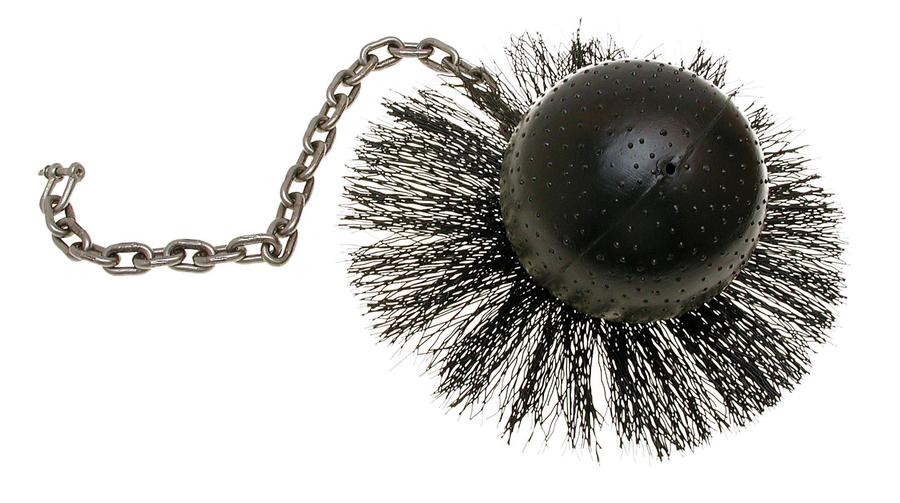
We will select all this based on the configuration of the chimney: if it is round, a brush is best suited. In this case, its diameter should be slightly larger than the diameter of the chimney. For a rectangular channel, it is more convenient to use a square metal brush. Before you start cleaning, make sure all fireplace and chimney doors are closed.
Having secured yourself on the roof with a safety belt, lower the tool into the pipe and begin to clean the walls of soot, moving the brush up and down. If during the cleaning process, we find any blockage, we will break it with the help of a core.
Sometimes it is not necessary to climb onto the roof: a direct chimney serving an open fireplace can be cleaned through the firebox. In this case, you will need a brush with a long handle.
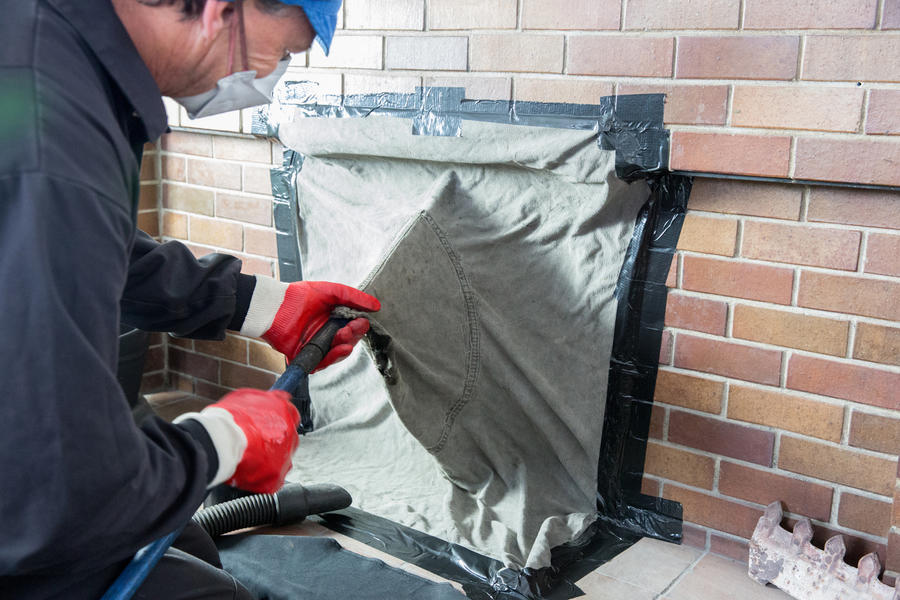
Changing glass
Cracked fire door glass must be replaced. When choosing new glass, you need to keep in mind that it must be a heat-resistant material that can withstand temperatures up to 550ºC for a long time. If we talk about a short-term increase in thermal load, then for a single-layer structure the load limit should be at least 750ºC, and for a multi-layer structure – 1000ºC. The optimal thickness of fire-resistant glass for a firebox is 4-5 mm.
The glass is attached to the back of the door using pressure plates that are secured with bolts. To remove the old glass, simply unscrew the bolts slightly and loosen the plates. When installing a new one, we perform the entire procedure in reverse order: insert the glass, press it with the plates, and tighten the bolts.

Tips for use
When using a heating unit, you must follow a few simple rules
There should be no soot deposited on the chimney
To do this, the fireplace should be heated with solid wood with a minimum resin content. These are, for example, alder, aspen, spruce, and pine (but not birch). They burn completely, leaving no soot. In addition, hard rocks burn slowly and have greater heat transfer.
Recently cut wood is too wet for a fireplace, so it must be dried outside under a shelter for a year (or a little more). Anthracite is also a material that produces almost no soot when burned.
Waste – do not burn!
Household waste – plastic packaging, leaves, etc. – cannot be disposed of in the device! Another prohibition concerns the use of gasoline and other flammable liquids for ignition: the use of these means risks a fire in the chimney.
The fireplace must not be allowed to overheat: when adding firewood, you must ensure that it fills the firebox no more than one-third of its volume. In addition, an air gap of 1 cm should be left between them, otherwise, the firebox will smoke. The recommended thickness of the logs is 7-10 cm.

Need protection from birds and precipitation
Rain or snow will not get into the pipe if you protect it from above with a small gable canopy. Atmospheric precipitation should not affect the operation of the fireplace and the functioning of the chimney. In addition, a canopy over the pipe will not allow birds to build a nest on it, which sometimes happens during the long absence of the owners.
However, foreign objects sometimes get into the chimney (for example, bricks falling out of the masonry), so it is advisable to check it before the start of each heating season.
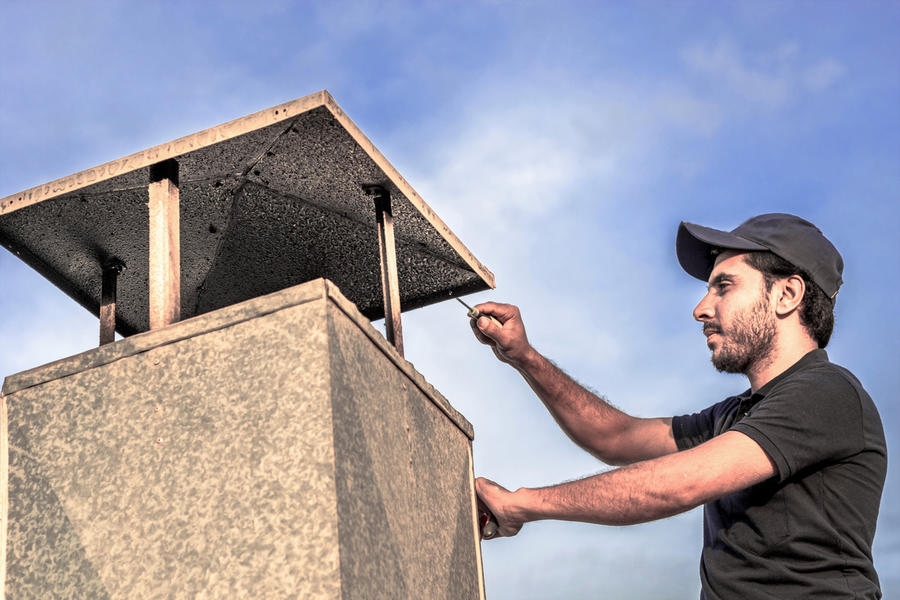
Reverse thrust is not allowed!
Air flows should not go from the fireplace into the room, but on the contrary – from the room to the fireplace, and then into the chimney. To prevent smoke from entering the room, all chimney dampers should be opened. If the ash pan is clogged with combustion waste, it will have to be cleaned, otherwise, a sufficient amount of oxygen will not enter the combustion chamber.
To avoid smoke, it is not recommended to open the fireplace door completely while firewood is burning. The continuous operation time of the device is always regulated by the firebox manufacturer, so operating the fireplace for a longer period can lead to its rapid failure.

